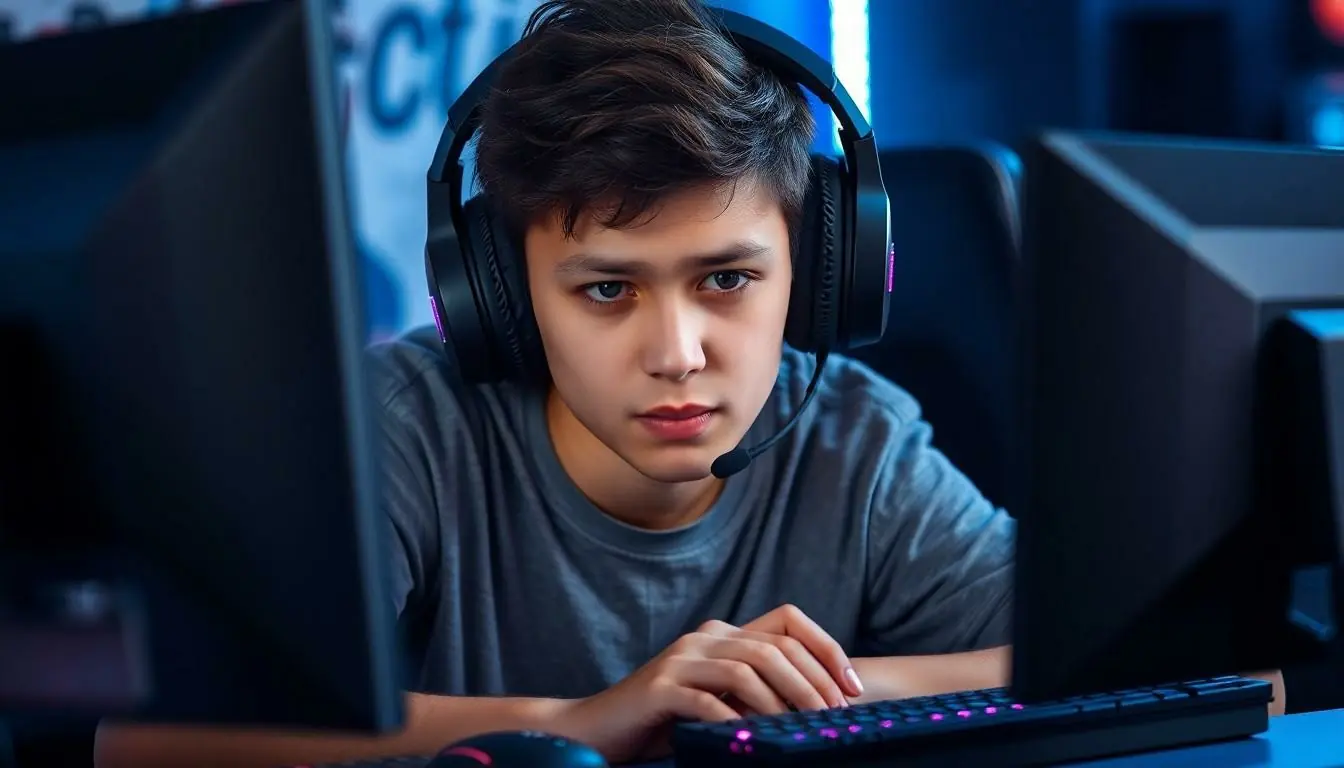Table of Contents
ToggleIn the high-stakes world of Valorant, every second counts. Players know that a split-second delay can turn a sure victory into a crushing defeat. Yet, nothing ruins the thrill of a clutch play quite like network problems. Whether it’s lagging behind the action or getting booted from a match, these pesky issues can turn even the most seasoned agents into frustrated gamers.
Imagine gearing up for an epic showdown only to be greeted by the dreaded “Connection Error.” It’s enough to make anyone want to toss their mouse out the window. But don’t despair! Understanding these network problems can help players reclaim their game and get back to what they do best—dominating the battlefield. Let’s dive into the common culprits behind network woes and how to fix them, ensuring players stay sharp and ready for anything.
Overview of Network Problems in Valorant
Network problems in Valorant significantly impact player performance. Lag, high ping, and connection errors disrupt gameplay, creating an uneven playing field. Players often experience frustrating delays, making it difficult to execute strategies effectively.
Latency issues commonly arise from unstable internet connections or server overload. Elevated ping times can lead to input delays, where commands do not register immediately, ultimately affecting shooting and movement. Frequent disconnections can also occur due to poor network infrastructure or ISP-related issues.
Packet loss is another prevalent concern. When data packets fail to reach the server, players notice stuttering or freezing. Such disruptions might result in missed opportunities during competitive play. Clear communication among team members suffers in these situations, as voice chat may also lag or drop.
Regional servers play a crucial role in mitigating network problems. Selecting the nearest server can reduce latency and enhance the overall gaming experience. Valorant players should regularly check server status for maintenance notifications that might affect connectivity.
Firewall and antivirus settings might inadvertently interfere with the game, leading to connection problems. Adjusting these settings can potentially resolve issues, ensuring smoother gameplay. Understanding these common network problems empowers players to troubleshoot effectively and maintain optimal performance.
Common Causes of Network Issues
Network issues in Valorant stem from various factors that can disrupt gameplay. Understanding these causes enables players to address problems effectively.
Server Connection Problems
Server connection issues often arise from high traffic or maintenance. Players experience delays when servers are overloaded, which can lead to frustrating gameplay. Connecting to a distant server exacerbates latency, resulting in longer response times. Choosing a nearby server reduces this impact, enhancing overall performance. Additionally, checking server status on official websites provides timely updates on maintenance or outages.
Internet Speed Limitations
Limited internet speed hampers gameplay. Minimum requirements for Valorant suggest speeds at least 3 Mbps for download and 1 Mbps for upload. Players with slower connections may struggle with lag and high ping. During peak hours, increased internet traffic can further decrease speeds, leading to an unstable gaming experience. Running speed tests helps players determine their current internet performance, allowing for necessary adjustments.
Hardware and Configuration Issues
Hardware and configuration problems can significantly affect gameplay quality. Outdated network drivers often cause connectivity issues, leading to frequent disconnections. Ensuring devices are updated helps maintain stable connections. Firewalls and antivirus programs can conflict with Valorant, blocking essential game traffic. Adjusting these settings or creating exceptions for the game minimizes disruptions during play. Proper router placement ensures optimal signal strength, further supporting a smoother gaming experience.
Impact of Network Problems on Gameplay
Network problems significantly disrupt gameplay in Valorant. Players experience frustration when faced with issues like lag, high ping, and connection errors.
Lag and Latency Issues
Lag greatly affects real-time decision-making. A delay of even a few milliseconds can lead to missed shots or unsuccessful abilities, impacting winning chances. High latency often creates a disconnect between player actions and game responses, leading to an unfair advantage for opponents. Competing in ranked matches with lag hinders player performance, resulting in decreased overall satisfaction. Players frequently encounter issues during key moments, escalating tension and disappointment. Reducing latency by utilizing the nearest regional server enhances responsiveness and can improve overall gameplay.
Packet Loss and Its Effects
Packet loss presents another critical challenge. The game relies on a steady flow of data for seamless communication between players and servers. Even a small percentage of lost packets can cause visual stuttering or missed actions, making it difficult to execute strategies effectively. This disruption often leads to de-synchronization of player movements, further increasing frustration during critical engagements. Addressing packet loss involves optimizing network settings and ensuring proper hardware configurations. Players can alleviate some issues by closing background applications that consume bandwidth, allowing for a smoother gaming experience.
Troubleshooting Network Problems
Network issues often lead to frustrating gameplay in Valorant. Identifying and resolving these problems can enhance the overall gaming experience.
Test Your Internet Connection
It’s essential to test the internet connection before diving into gameplay. Use online speed test tools to measure download and upload speeds, aiming for at least 3 Mbps download speed. Monitoring ping times provides insight into latency, with values under 30 ms being ideal. If the connection is unstable, restart the router and check for any interference from other devices. Conducting tests at different times can reveal patterns associated with congestion, particularly during peak hours. Gathering this data aids in understanding if the connection meets the game’s requirements.
Optimize Network Settings
Optimizing network settings improves overall performance. Prioritize the Valorant application in the network settings of the router to allocate more bandwidth. Configuring Quality of Service (QoS) settings ensures gaming traffic receives higher priority than other online activities. Adjusting MTU settings can also resolve packet fragmentation issues. Disabling background applications that consume bandwidth keeps the network focused on gaming. Regularly checking for and updating router firmware helps maintain optimal performance.
Use a Wired Connection
Using a wired connection significantly boosts stability and response time. Connecting directly to the router with an Ethernet cable reduces interference and minimizes latency. Wireless connections often introduce variability and can lead to packet loss. For competitive gaming, the reliability of a wired connection becomes crucial, especially during intense matches. If switching from wireless to wired, players often notice improved performance and a decrease in frustrating lag. Consistent speeds deliver a smoother gaming experience, allowing for better positioning and more accurate shots.
Conclusion
Addressing network problems in Valorant is essential for any player aiming to enhance their gameplay. By recognizing the factors that contribute to lag and latency, players can take proactive steps to create a more stable gaming environment. Optimizing settings and ensuring a reliable connection can make a significant difference in performance.
With the right strategies in place, players can minimize disruptions and enjoy a smoother gaming experience. Staying informed about server status and making adjustments to hardware can further reduce frustration. Ultimately, a commitment to improving network conditions can lead to better results in competitive play.





